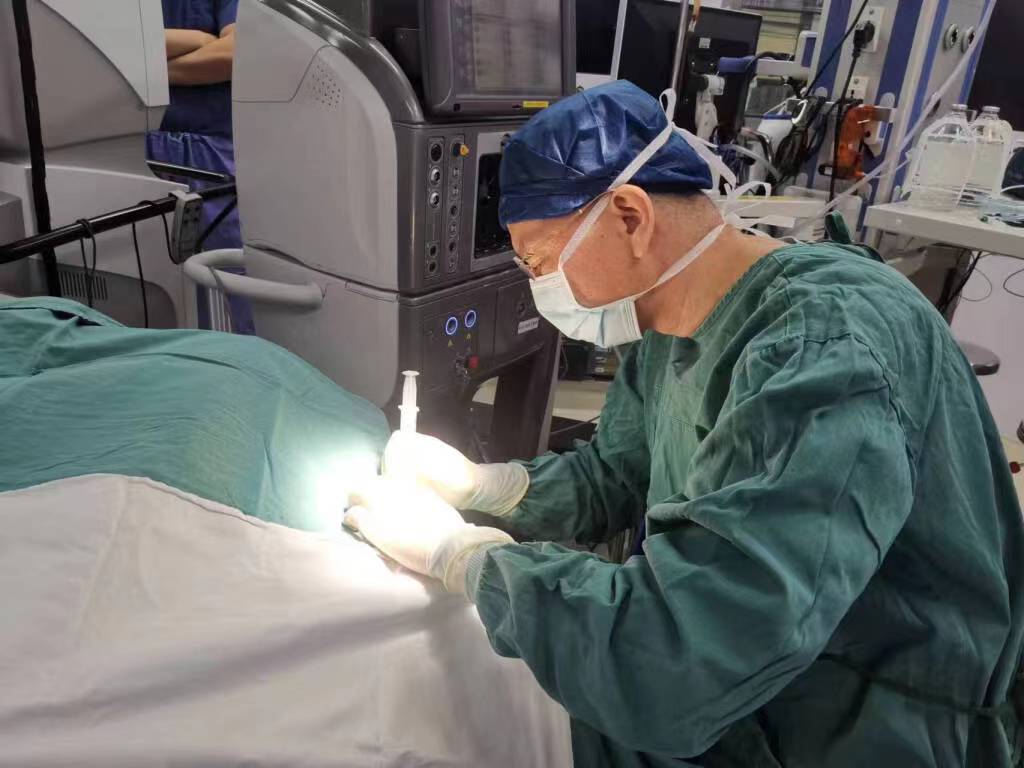- News
Shanghai General Hospital Established the First Diagnosis and Treatment Center for the Ophthalmic Rare Disease
Link of the original article:
https://m.peopledailyhealth.com/articleDetailShare?articleId=6d0be2544844458cb64d0fe9044bdcd1
On July 8, the first diagnosis and treatment center for the ophthalmic rare disease was established in Shanghai General Hospital. In the future, the center will launch clinical trials of gene therapy for different types of hereditary retinal diseases to help patients regain their light, and will also fill the gap in the field of gene therapy drugs independently developed by ophthalmology in China.

Hereditary retinal disease is caused by genetic abnormalities, with a prevalence of 1/3000-1/5000. Calculated on the basis of the 15 million newborns in China each year, this is equivalent to 15 newborn children who will develop this disease every day. Patients may have a series of symptoms such as loss of vision, photophobia, narrowing of the field of vision, frequent falls when walking, and reduced ability to recognize colors. Hereditary retinal disease affects people of all ages, and in most cases the condition worsens over time. Although gene therapy is now bringing new hope to patients, imported ophthalmic gene therapy drugs are expensive.
Shanghai General Hospital is at the international advanced and domestic leading level in the fields of retinal detachment, diabetic retinopathy, age-related macular degeneration, etc. In recent years, the hospital has accelerated the construction of the diagnosis and treatment system for hereditary retinal diseases and established a set of diagnostic and treatment procedures in line with the international norms and the characteristics of the disease in the Chinese population, and developed the first multi-center information management system for the natural disease process cohort study in China.
The Ophthalmology Center of Shanghai General Hospital (National Clinical Medical Research Center for Ocular Diseases) initiated a clinical trial of gene therapy for hereditary retinal diseases and completed the first case of Leber's congenital amaurosis (LCA) gene therapy in China in June 2021. Its safety and efficacy have now been preliminarily verified.

According to Sun Xiaodong, vice president of Shanghai General Hospital, the establishment of the Diagnosis and Treatment Center for the Ophthalmic Rare Disease is to use cellular gene therapy, which is currently the most promising, the most potential and has the advantages of long-term benefits from single treatment in the global medical community, as an ice breaker to solve the problems. "The application of gene therapy technology to ophthalmic diseases can be described as a 'match made in heaven'. Although the eye is only a small organ, it accounts for up to 24% in the statistics of global gene therapy clinical trials, and it is the highest professional segment. First, compared with other organs, the viral load used by the eye is small; second, the eye is an immune-immunized organ, and the potential side effects caused by the systemic spread of the virus are relatively small ; Single-gene ophthalmic genetic diseases, the pathological mechanism and target organ target cells are relatively clear, in addition to a variety of serotypes of AAV viral vectors are highly selective for many cells in the retina, and therefore more suitable for the use of viral vectors for therapy."
The eye is "transparent". Through fundus photography, slit lamp, OCT, and many visual function methods, the treatment effect can be evaluated visually, which is also the core advantage of gene therapy in ophthalmology.
We hope that the enter can not only bring good news to patients, but also focus on the needs of national development, the construction of Shanghai Science and innovation center and the development of the biomedical industry." Sun said.
